At one time or another, we all get writer’s block when it comes to PPC and digital ad creative.
Maybe you aren’t sure of what to put in that second headline? Or perhaps it’s a challenge to create those callout extensions.
The best performing digital ad creative is always developed with some fundamental classic marketing & advertising principle in mind.
The principles that have proven themselves effective over time all share two important characteristics:
- They derive from a fundamental understanding of human psychology.
- They transfer easily when new platforms and technology emerge.
Below are 10 classic principles you can look to incorporate into your digital ad creative that will give you an edge when you’re fighting to get that click from your ideal customer.
1. The More Informative Your Advertising, the More Persuasive It Will Be
This first principle comes from David Ogilvy, who is widely considered to be the Father of Modern Advertising.
While Don Draper was a fictional character on a popular TV show set in the ’60s, Ogilvy was a real-life “Mad Man” who believed simply that having useful information on your customer is the ultimate key to successful advertising (provided you act on it, of course).
Today we can find out what our potential customers are looking for with a few simple clicks. Let’s take estate planning as an example.
An average middle-income middle-age consumer might assume that estate planning applies only to the old and/or wealthy. This person may have started out believing the best course of action would just be a will.
She may have talked to friends, colleagues, or a financial advisor who casually mentioned estate planning or living trust. This got her thinking about the need to research her options so here is where the advertiser needs to be thinking about how to resonate with someone who’s in that stage.
One great tool that gets discussed a lot on blogs and at industry conferences is Answer the Public. It’s popular for good reason.
Using the same principles as Google and Bing’s autocomplete search suggestions, the tool gives you important context and clues into the mind of your potential client.
Type in “Estate Planning” on the home page of Answer the Public.
Once you see the results, click through the links along the top navigation pane to view your phrase used in questions, prepositions, and comparisons that people may make.

Below is a closer look at a sub-segment of results returned. Here, as an advertiser you can start to appreciate the value of having this type of information to work from:
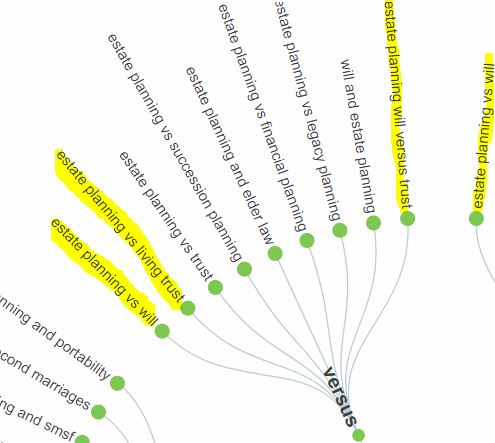
Keep in mind this potential client will not likely query every comparison you see above, but there’s a strong probability that many of these thoughts are going through her mind. She may just query [Wills and Estate Planning].
Based on what your research shows might be going through her mind, a first draft of your ad copy should speak to some of the questions she probably has:

2. Scarcity
In his groundbreaking book “Influence” (published in 1984), Dr. Robert Cialdini details his years of research showing that the less available something is, the more likely people will want it.
This can work one of two ways:
- Limited quantity.
- Limited time.
While this is a classic principle that has proven to be highly effective, it’s also one to use carefully. Scarcity only works as an advertising tactic when something truly is “scarce.”
If your strategy is to have a 30% off sale once a month every month, don’t be surprised when ad copy stating “hurry, ends soon!” quickly becomes ineffective.
However, for events such as an annual sale, Black Friday event, or Grand Opening that truly don’t last, use it to your advantage in your ad copy.
For Google Search Ads, here’s a script that lets you put a sales countdown calendar into your copy using ad customizers.
3. First, Take Only What the Intended Audience Will Already Give You
In their classic book, “Positioning,” marketing legends Al Ries and Jack Trout preach that you must understand how your competitor is perceived in the mind of the customer that you’re both trying to earn.
For example, if that competitor is already seen as the low-price leader, you simply won’t win that battle.
Even if you compete with Walmart and your prices are actually lower than them, they’re fundamentally too big and too well established in the mind of the consumer. They will ultimately win that battle of perceptions.
As an advertiser, you must find your opening in a competitive market in order to properly position your product or service in an ad. There’s always some kind of opening that gives you an advantage.
A few examples to consider:
- You’re local and involved in the community and the competitors are not.
- You’re more expensive, but independent quality ratings and reviews show you’re better.
- When someone leaves a message, you call back (seriously, that can be the difference in the service industry provided you live up to that promise – see below).
- The competitor has a broad reach whereas your solution is only right for a specific segment (but for that segment, your solution is really, really right).
Imagine a dock and boatlift service company whose reach includes several large lakes in a metropolitan area.
They keep hearing that the number one way they get business is simply that “the other guys never call back.”
Since anyone looking for their service can feel that most dock and lift guys don’t call back, they take that and attack it head-on:
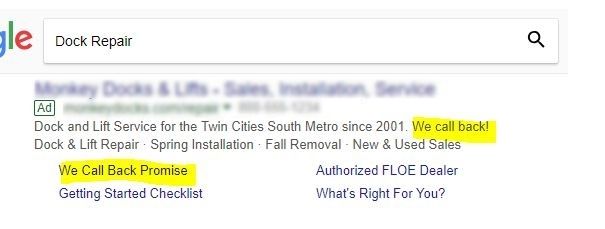
4. The People You Address Are Selfish…
“As we all are. They care nothing about your interests or profit. They seek service for themselves.”
– Claude Hopkins Author of Scientific Advertising, 1923
Nearly a century ago, Hopkins reminded the advertising world that customers are fundamentally selfish and aren’t going to buy from you unless you can address their specific needs. It’s a simple principle, but easy for marketers & advertisers to forget.
Fortunately, today we have many tools at our disposal that Hopkins didn’t have, to give us insights into the “selfish needs” of our customers (see Answer The Public in #1).
Sometimes those needs are really simple. For example, below is an ad by a Mercedes-Benz dealer who knows they have customers that hate having to make appointments.
Of course, not all hate it. But it’s a real issue for a large enough segment of their customers that they devote the entire second headline to addressing it:

5. Be Empathetic…
“…Talk about what THEY (your customers) want and SHOW them how to get it.”
– Dale Carnegie
In 1937, Carnegie wrote about this principle in his legendary book “How to Win Friends and Influence People.” To this day, what he outlined serves as a guide for successful sales and marketing people everywhere.
At the core, his message was, “It’s always about them, never you.”
Think about your own behavior as a buyer. Ultimately you’re more likely to buy from someone who has demonstrated they understand your needs and make it easy for you to meet them.
Empathy is admittedly an overused term in the marketing world, but it’s also an underutilized practice.
Let’s look to the medical field as a perfect example of the importance of this principle. A symptom or diagnosis can bring fear, uncertainty, and a general feeling that you’re facing it all alone.
Case in point: the prospect of needing spinal surgery – even if it’s minor.
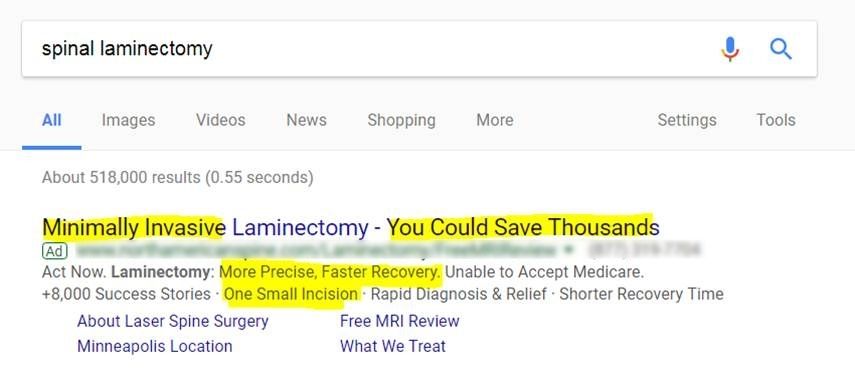
The ad above for spinal laminectomy isn’t perfect, but it clearly shows the clinic empathizes with its potential patients. It addresses key concerns:
- Minimally invasive.
- Precision.
- Faster recovery time.
- Track record of success stories to inspire patient confidence.
The ad also shows the potential patients how to get what they want:
- Call for more info or an appointment.
- Free MRI review.
- Local clinic location.
The bottom line with this classic principle is that the better job you can do of putting yourself in the shoes of the audience you’re intending to reach, the more likely you are to be able to fill their need.
6. Don’t Get Too Clever and Try to Impress Your Peers. They’re Not Your Audience.
In 1916, Robert Updegraff first wrote an essay for the Saturday Evening Post about Obvious Adams – The Story of a Successful Businessman.
Today that short story is easily available as an ebook almost anywhere you can get one and that century-plus old quick read is well worth an hour or two of your time.
The principle is nothing profound – actually, it’s quite obvious! However, in the competitive world of advertising, it’s easy to get caught up in the moment and forget about the needs of your audience and what appeals to them.
Fast forward to today, and below you’ll find a Facebook ad for RX Bars that does this right.
They don’t get cute and artsy – they’re just trying to make a simple point: Only three ingredients and nothing artificial.
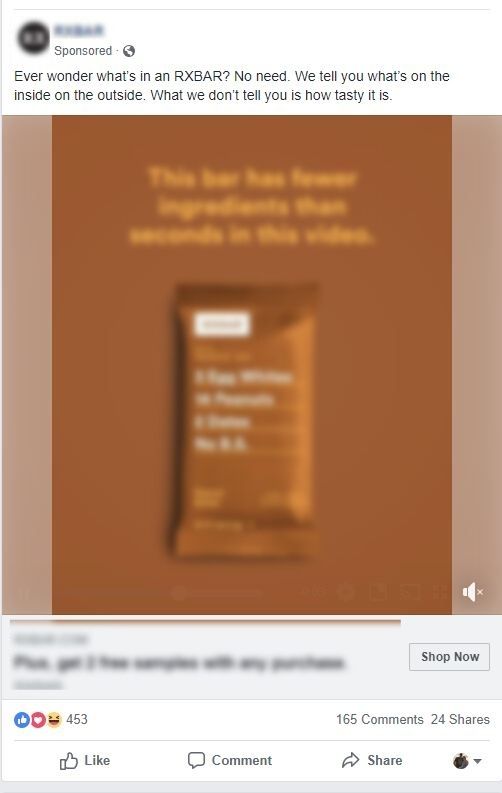
7. Use Everyday Language Your Audience Recognizes
“Talk to them in the language they use everyday.”
– David Ogilvy
The Father of Modern Advertising understood that an ad needs to be relatable to the intended audience.
Being relatable goes beyond simply avoiding the use of industry jargon (which you should avoid unless of course it actually means something to your audience).
Few industries are as good at jargon as insurance companies are.
Here is an ad result for [life insurance quote] that does a great job of using plain-spoken, everyday language in addressing their potential customer:
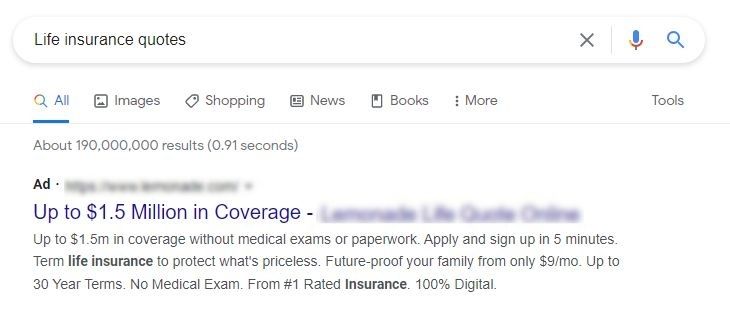
8. Fight the Leader Not by Being Better, But by Being Their Opposite
Reis and Trout wrote another classic book more than a decade after “Positioning” when “The 22 Immutable Laws of Marketing” was published in 1993.
In that book, the two extraordinary marketers wrote about 22 specific marketing principles that should never be violated. To their credit, most of those principles hold up almost 30 years later, but that’s a subject for another post.
One of the “Immutable Laws of Marketing” stated that you can’t fight the leader by being better, but by being their opposite. This applies to businesses large and small.
Apple’s iOS is not the market leader. Google’s Android has Apple beat almost 3:1, according to Stat Counter.
If you look at Apple’s ads, they’re not trying to be better. They’re positioning themselves as the opposite of what Google’s Android OS is perceived to be (tracking and sharing your every move).
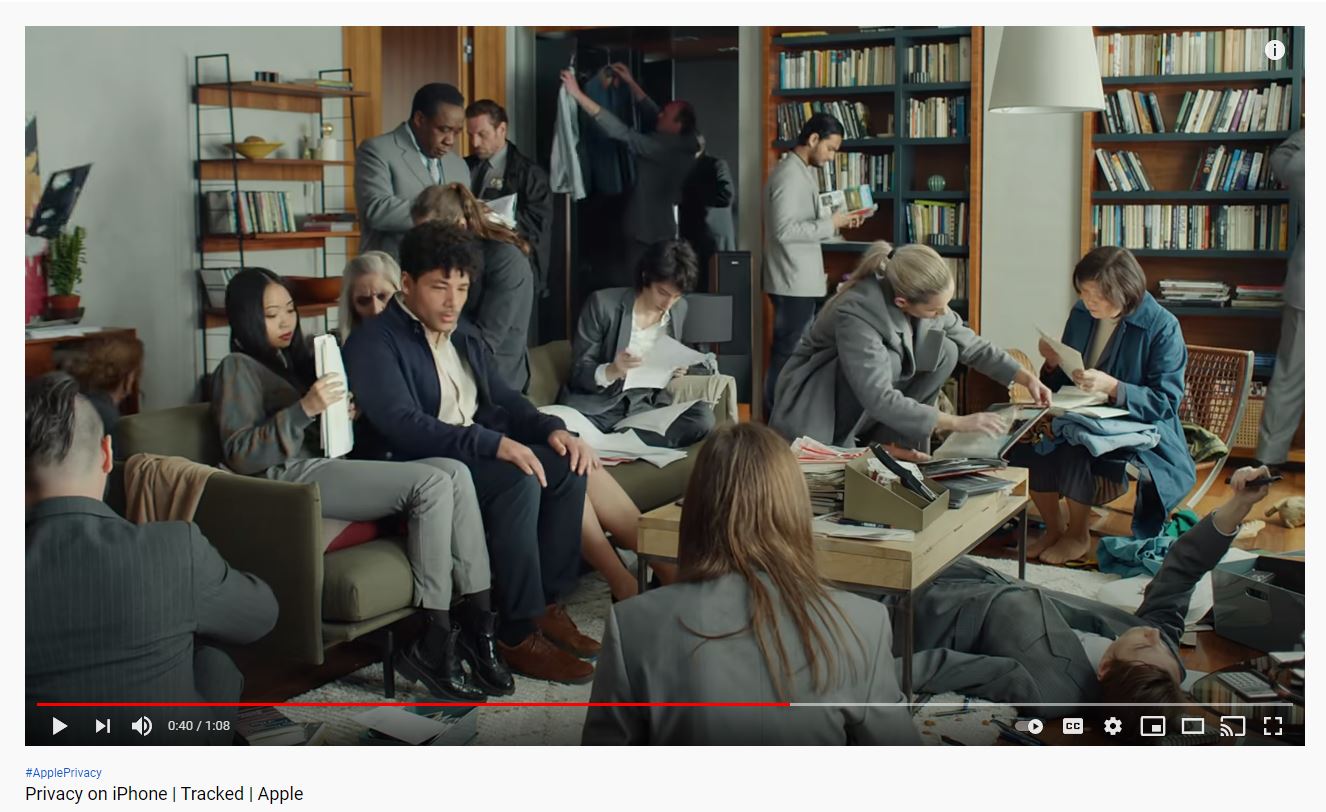
9. The Law of Focus
It’s no secret humans have short attention spans. That’s why Reis and Trout maintained that you must zero in on what your customer really wants when they included the “Law of Focus” in their “Immutable Laws of Marketing” masterpiece.
Today, focus is probably even more important than it was 30 years ago because:
- There are far more distractions now.
- A search query allows a potential customer to indicate a very specific intent.
- A lack of clarity will ultimately result in a lack of conversion.
Below is a simple ad result for the query [online appointment scheduling software].
There are plenty of solutions in the marketplace that offer scheduling as part of a big suite of features.
The advertiser in the example below is one such company that has a suite of solutions, but for the ad, maintains focus only on what the potential customer is looking for:

10. Provide Proof
Almost 80 years ago, Victor O. Schwab recognized that for advertising to be successful, it needs to help customers satisfy one of the most human conditions: The need to provide a rational justification to an emotional-based decision.
In 1942, he published his most famous book, “How to Write A Good Advertisement: A Short Course In Copywriting.”
To sum up this principle, somewhere in the ad creative there should be facts, figures, testimonials, a scientific study, or something concrete and reputable that a customer can easily latch onto when (not if) the need arises to justify the purchase action.
Below is a recent PPC ad return for a [personal trainer] that makes a simple point about gym memberships vs. using the service advertised below:
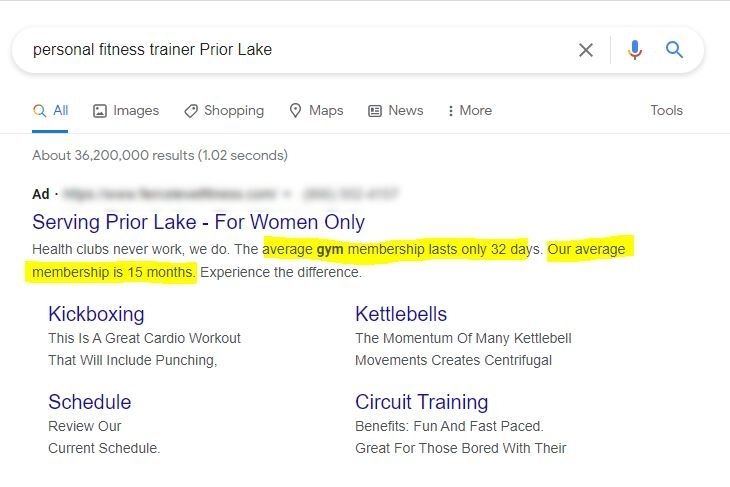
As you can see from the ad copy, this doesn’t need to be anything fancy. It just has to give the customer something easy to remember when justifying their decision.
Few things are more emotionally driven than starting a fitness plan (perhaps that’s why so many ultimately fail!) so the need for a rational justification will come fast and frequent due to the ongoing costs and commitment required.
If you’re a local service provider, here’s another example of providing proof. Local services (plumbing, HVAC, electrical, etc.) have an opportunity to become “Google Guaranteed.”
While not a painless process, the benefits are clear when you see the results at the top of the page along with a guarantee.
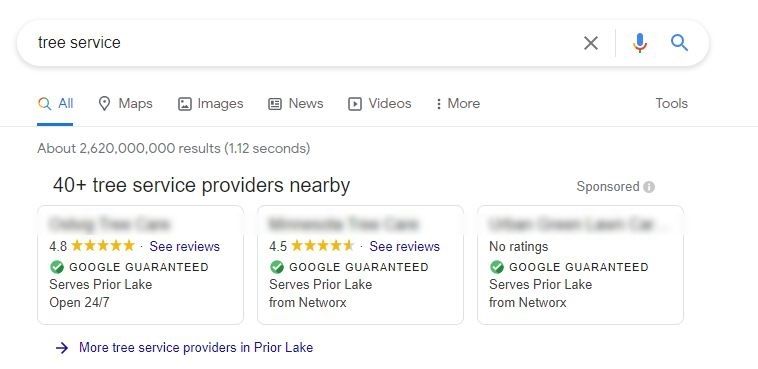
Bottom Line
PPC and other digital ad formats are constantly evolving in terms of features, targeting capabilities, and formats.
Even so, the classic marketing and advertising principles outlined here will stick because fundamental human behavior is at the core of each.
Remember them when you’re developing your ad creative.
Also, remember there is no one size fits all — results will vary depending on your audience, market, product, and timing.
More Resources:
- 7 Powerful Benefits of Using PPC Advertising
- 6 Tips for More Targeted & Engaging PPC Campaigns
- How to Advertise on Facebook: A Beginner’s Guide
Image Credits
All screenshots taken by author, August 2021





